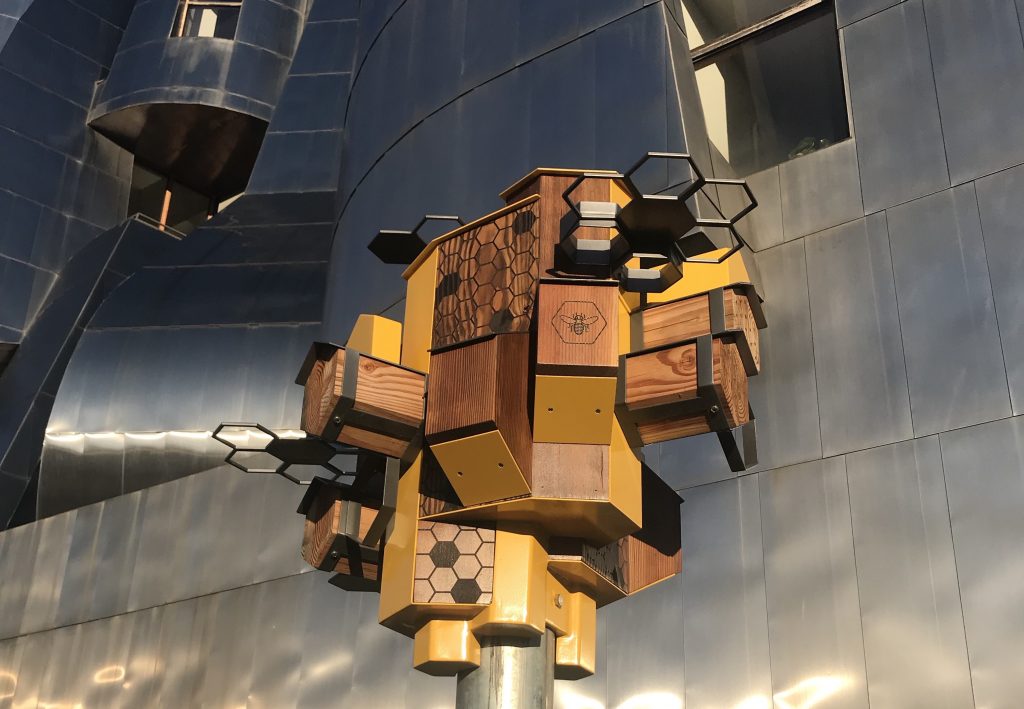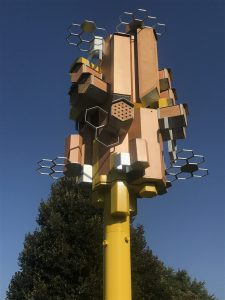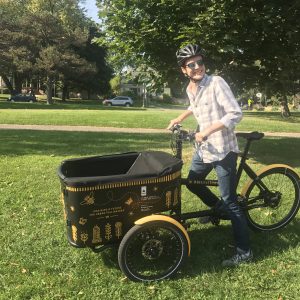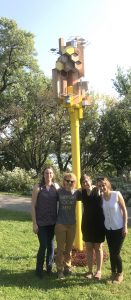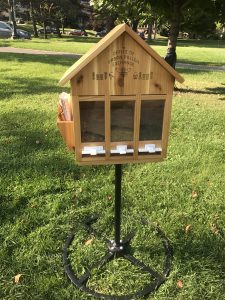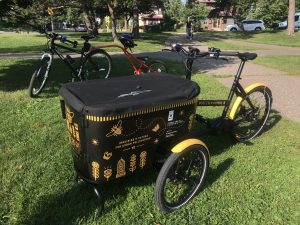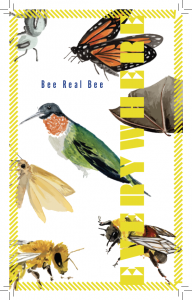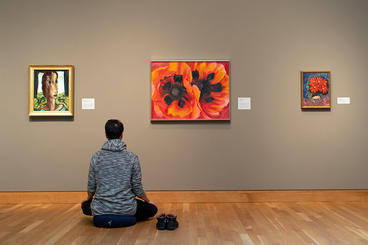Last year, the Weisman Art Museum became home to a few more friendly, fuzzy creatures. These critters reside high up in a sky-rise on East River Road, they have a wonderful view of the Mississippi River, and in their spare time, they enjoy buzzing around campus.
They’re native bees!
Supported by a MN Futures Grant and in collaboration with Saint Paul Public Art’s Bee Real Bee Everywhere project, the City of Saint Paul’s Percent for the Arts program, and the University of Minnesota’s Bee Lab, WAM became the fourth active sculpture site to house native and wild bees in support of local pollinator populations. Led by UMN Associate Professor Christine Baeumler, artists Amanda Lovelee and Julie Benda, and UMN native bee researcher Colleen Satyshur, the Bee Real Bee Everywhere project melds art, science, policy, and public engagement.
Art
“Originally we were thinking more small disseminated sculptures,” said Lovelee. When the project began in 2017, Lovelee was the City Artist in residence for Public Art Saint Paul. She is currently a park ambassador of the Metropolitan Council. “We kind of stepped back to this idea that there’s so many people in the ecosystem of saving pollinators, and asked, ‘What's the role of artists in this?’”
The team considered aesthetics, referenced art history, and thought about the future for the project, a future they hoped would be a long and lasting one. They also were faced with the choice of site locations which challenged the accessibility of resources for the bees, but also places where the public could learn about and engage with the project. As an additional benefit bee lawn, with pollinator friendly plants has been installed around the base of the sculpture in front of WAM.
An environmental artist who teaches in the Interdisciplinary Art and Social Practice area of the Department of Art, Baeumler weighed the significance of WAM as a sculpture site,
“I really wanted to situate this in the context of art. Putting it in the context of an art museum helps people to expand their notion about what art is or can be,” she said.
As a result, what arose from these considerations was the bee habitat sculptures that currently stand at Lake Como, Lake Phalen and WAM. Fabricated by Blue Rhino Studio, the sculptures are impossible to ignore, out-of-the-ordinary, bright, geometric, and quirky. They raise awareness by raising heads, eyes, and eyebrows—drawing attention from bypassers and peaking curiosity.
“That curiosity is kind of a draw to get people to come into the situation. I think that’s something art can do really well; to be a focal point of curiosity,” Baeumler said.
Science
Due to extreme habitat loss from pesticides, herbicides, neonicotinoids which poison plants and soil—even from weed-whacking and trimming stems that bees nest in—it’s no surprise that pollinator populations are in dangerous decline. Native and wild bees have co-evolved with North American plants, making them best suited to pollinate over other pollinator species such as honey bees (an introduced and invasive species).
“I think for Amanda, Julie and me, what’s been important to us about our projects as artists is it engages with real science—not just symbolic science, but actual science,” Baeumler said. “What’s so fantastic about being associated with the University, is that we get to work with Colleen Satyshur and other cutting-edge bee experts.”
Baeumler first heard UMN Bee Lab entomologist Colleen Satyshur speak about stem-nesting bees during a lecture at the Pollinator Summit at the University of Minnesota’s Landscape Arboretum in 2016. Baeumler approached her afterwards and asked if she was interested in collaborating on the project. Satyshur said yes.
The native bees that inhabited the sculptures over the spring and summer are solitary bees; they do not form hives, and although they can nest next to one another, they are unrelated from their neighbor. The bees have since laid their eggs and died, completing their short, year-long life cycles. Over the winter, Satyshur and her Bee Lab team removed the part of the sculptures containing the laid eggs and analyzed them using a highly sophisticated DNA process. They hope to find what kinds of bees are nesting and laying their eggs and what vegetation the bees use to make their nests.
